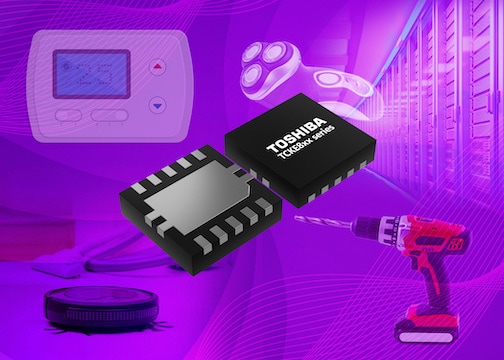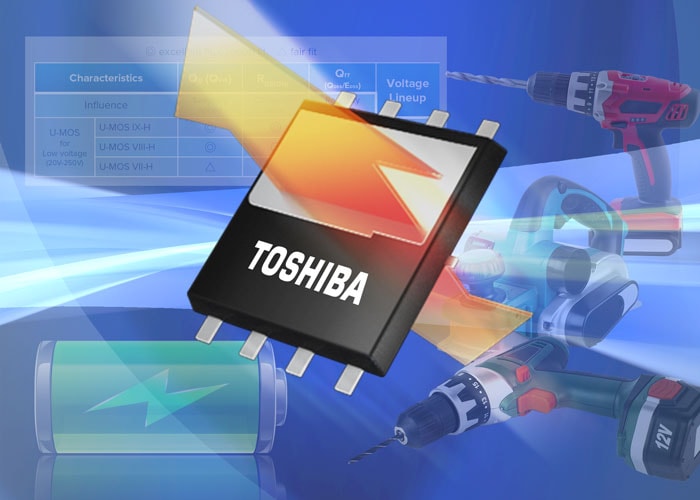- General Top
- SEMICONDUCTOR
- STORAGE
- COMPANY
-
My ToshibaSemicon
- Semiconductor Top
-
ApplicationsAutomotive
Body Electronics
xEV
In-Vehicle Infotainment
Advanced Driver-Assistance Systems (ADAS)
Chassis
IndustrialInfrastructure
BEMS/HEMS
Factory Automation
Commercial Equipment
Consumer/PersonalIoT Equipment
Healthcare
Wearable Device
Mobile
Computer Peripherals
-
ProductsAutomotive Devices
Discrete Semiconductor
Diodes
Transistors
Logic ICs
Analog Devices
Digital Devices
Wireless Devices
※
: Products list (parametric search)
Power SemiconductorsSiC Power Devices
※
: Products list (parametric search)
Isolators/Solid State RelaysPhotocouplers
Digital Isolators
Solid State Relays
Fiber Optic Transmitting Modules
※
: Products list (parametric search)
MOSFETsIGBTs/IEGTsBipolar Transistors※
: Products list (parametric search)
Diodes※
: Products list (parametric search)
MicrocontrollersMotor Driver ICsIntelligent Power ICs※
: Products list (parametric search)
Power Management ICsLinear ICs※
: Products list (parametric search)
General Purpose Logic ICsLinear Image SensorsOther Product ICsOther Product ICs
※
: Products list (parametric search)
-
Design & Development
Design & Development
Innovation Centre
At the Toshiba Innovation Centre we constantly strive to inspire you with our technologies and solutions. Discover how to place us at the heart of your innovations.
-
Knowledge
Knowledge
Highlighted Topics
Further Materials
Other
- Where To Buy
- Part Number & Keyword Search
- Cross Reference Search
- Parametric Search
- Stock Check & Purchase
This webpage doesn't work with Internet Explorer. Please use the latest version of Google Chrome, Microsoft Edge, Mozilla Firefox or Safari.
require 3 characters or more. Search for multiple part numbers fromhere.
The information presented in this cross reference is based on TOSHIBA's selection criteria and should be treated as a suggestion only. Please carefully review the latest versions of all relevant information on the TOSHIBA products, including without limitation data sheets and validate all operating parameters of the TOSHIBA products to ensure that the suggested TOSHIBA products are truly compatible with your design and application.Please note that this cross reference is based on TOSHIBA's estimate of compatibility with other manufacturers' products, based on other manufacturers' published data, at the time the data was collected.TOSHIBA is not responsible for any incorrect or incomplete information. Information is subject to change at any time without notice.
require 3 characters or more.
Transforming the Factory Floor - The Increasing Prevalence of Robotics and the Need for More Efficient Servo Technology

We are moving into an age where far greater degrees of automation will be witnessed. Much like the original industrial revolution did, back in the late 1700s and mid 1800s, the advent of Industry 4.0 will cause considerable upheaval. There is likely to be some initial unrest, with people worried about job security. This was exactly how things played out in the past too, with angered French textile workers famously throwing their clogs (or ‘sabots’) into the mechanised looms to prevent them from operating - and it is from this that the word ‘sabotage’ is believed to be derived. Much as was the case back then, the long-term effects of automation won’t be to deprive people of jobs, but to in fact give them better job opportunities. Removing the need for laborious and mundane tasks to be undertaken by human operatives, and offloading them on to robots instead, will mean there can be extra focus placed upon providing the workforce with roles that are more varied and rewarding.
Robots never suffer with fatigue, they don’t need to take breaks and if properly programmed won’t make mistakes. They are well suited to taking care of assembly or component replenishment activities on production lines. Via their use, the throughput of manufacturing facilities will be significantly increased and the quality of the products also improved. Likewise, autonomous guided vehicles (AGVs) can be assigned to materials handling and logistical tasks in warehouses. While all of this is being done, upskilled human staff can be involved in a supervisory capacity - overseeing what their automated co-workers are doing and looking for ways to improve processes.
Servos are an essential element of robotic/AGV design - enabling both their positional movement and changes to their orientation. These servos will be driven by electric motors of some form, either stepper or brushless DC (BLDC) motors. Raising the efficiency of these servos will allow robots/AGVs to work for longer periods before they need recharging, which will mean that productivity levels are higher.
How efficiently each constituent motor runs will depend on the accuracy with which the motion control system tracks its rotor’s position. Space limitations and pressures to keep the total bill of materials costs down can have a negative impact on this. Different circumstances will lead to different choices being made in relation to the controller IC, the encoder, the interface protocols employed, etc. Therefore an adaptable platform, with scope for such items to be interchanged would clearly be advantageous.
In order to assist engineers in developing more efficient motor systems for robot/AGV servos which are well matched to particular application scenarios, Toshiba offers its Servo Drive Reference Model. For maximum flexibility, this solution allows different controller, encoder and interface modules to be added to the main board. Consequently, it is easy to create an optimal solution for the specific operational criteria, with any constraints imposed on the design being respected accordingly.
Toshiba has published a whitepaper on how the efficiency of robot/AGV servos can be improved through this adaptable modular approach. It can be downloaded below:




